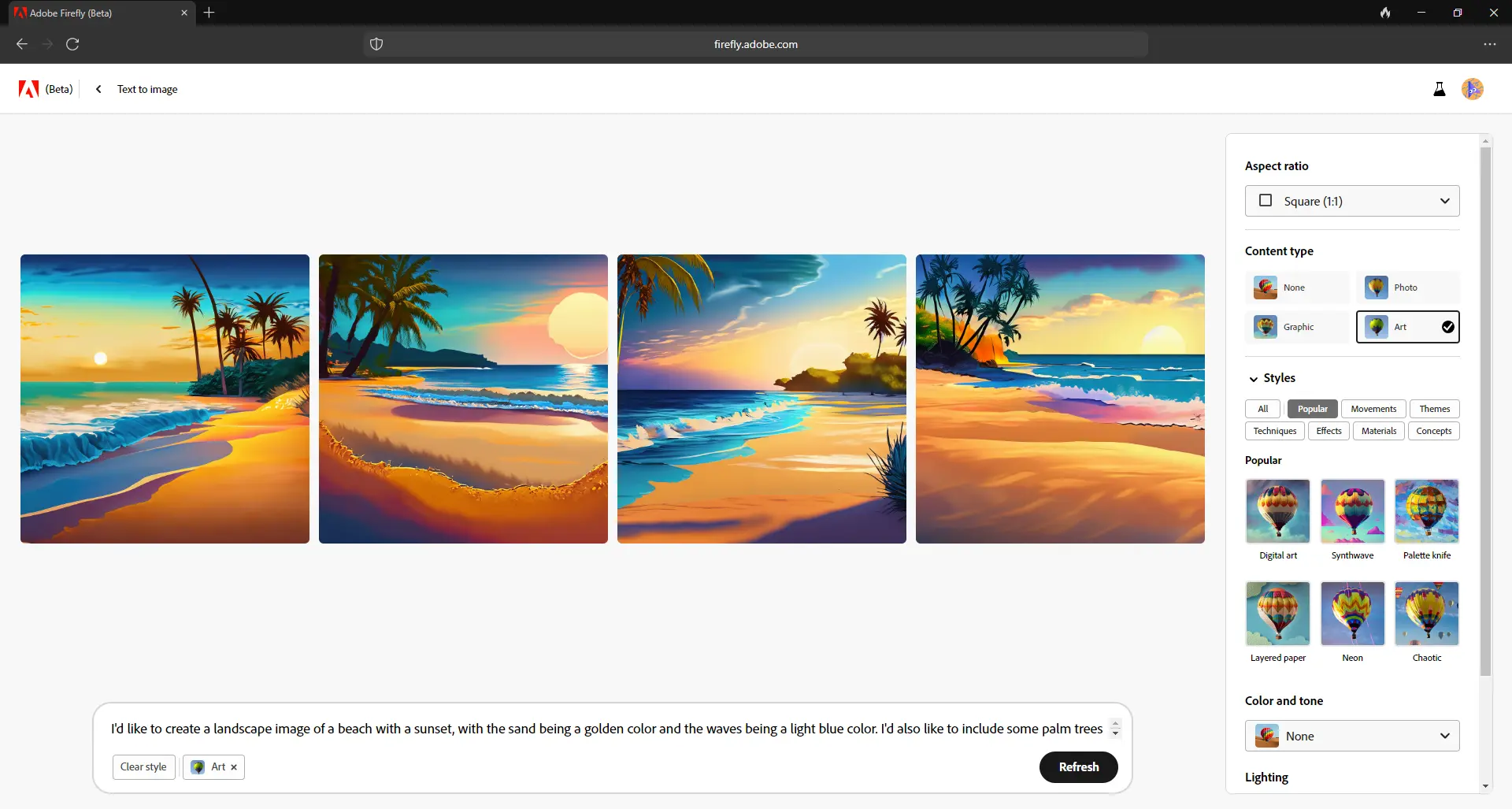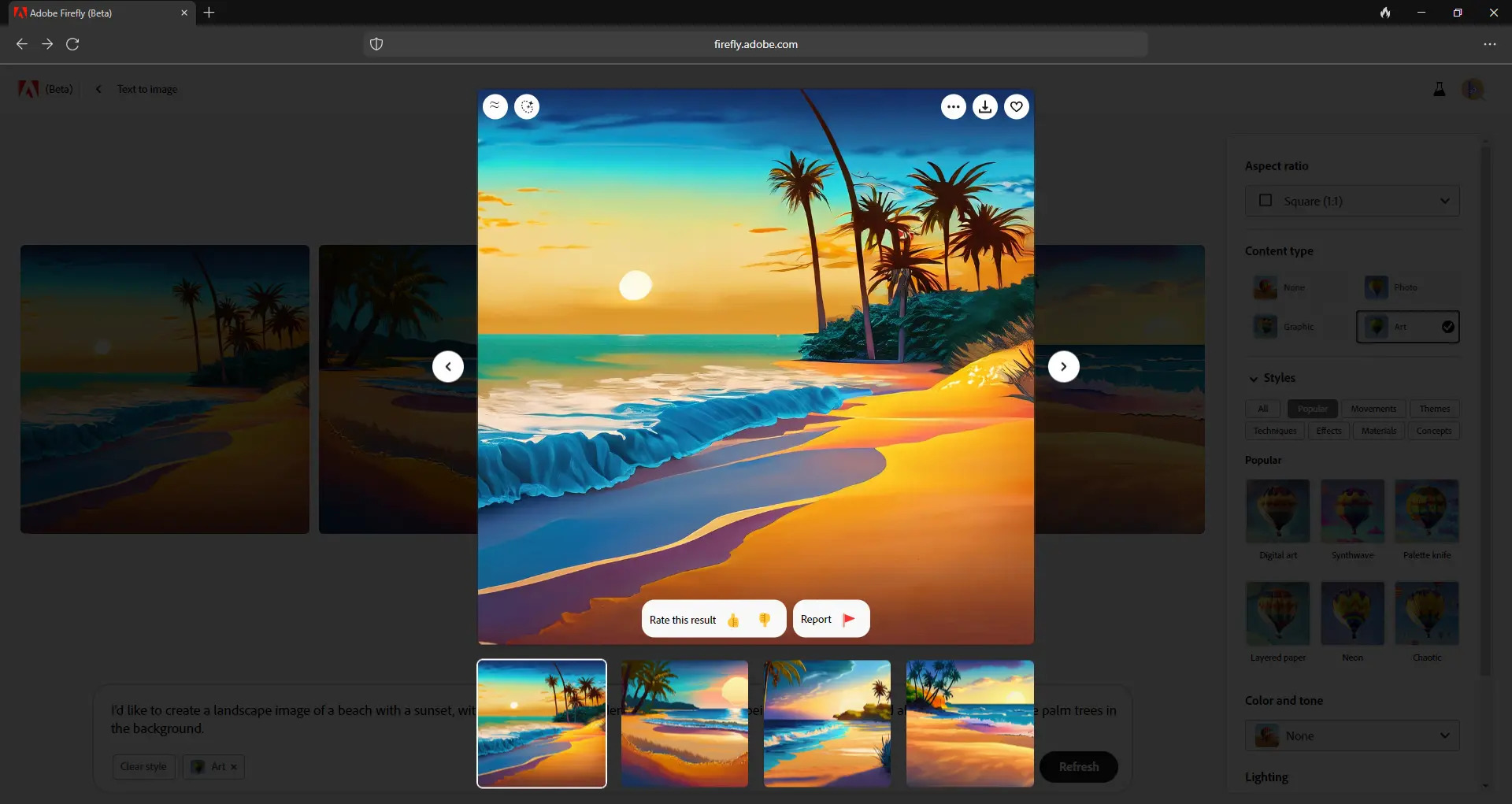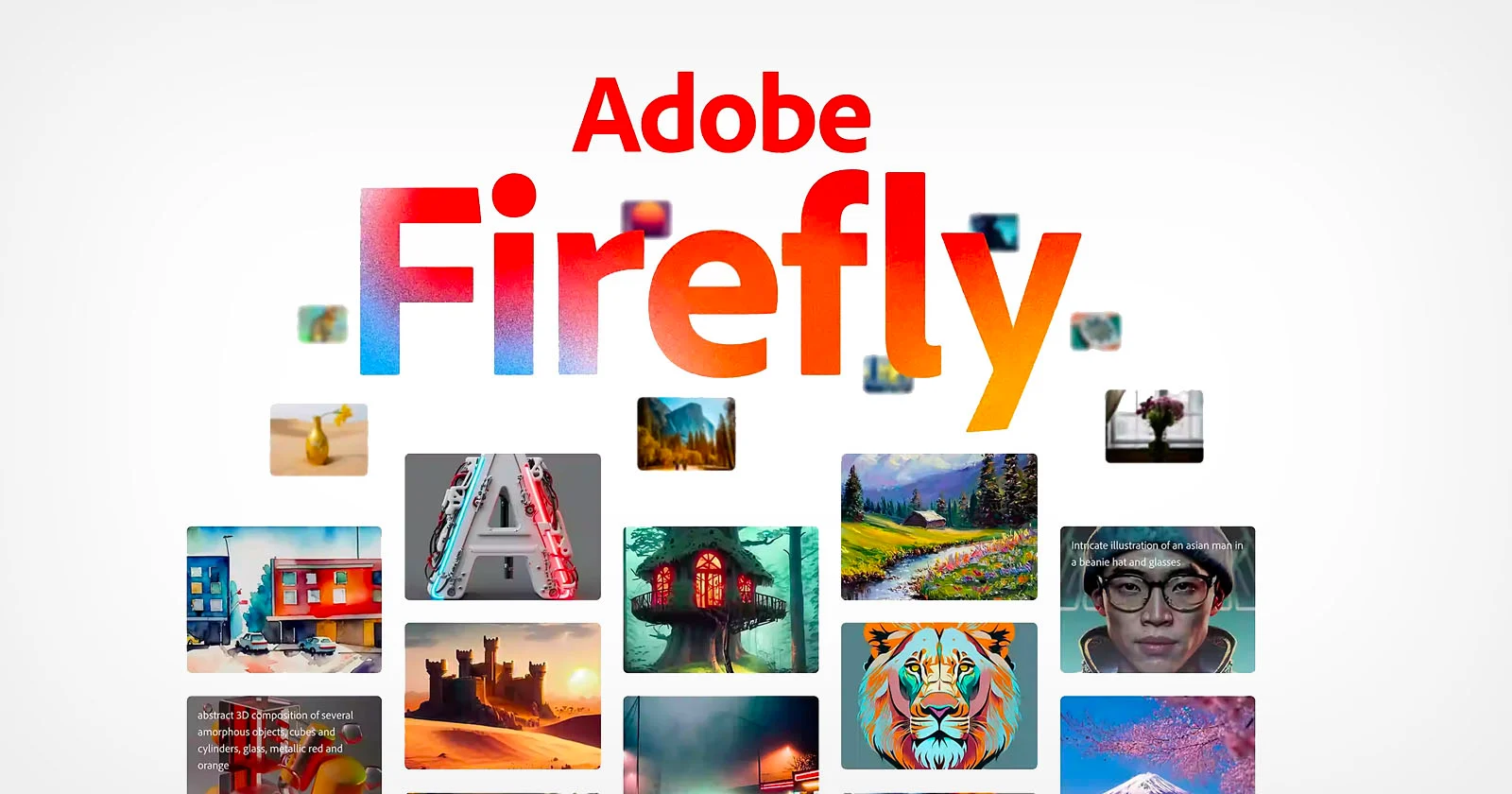In the ever-evolving landscape of design and creative work, Adobe Firefly emerges as a powerful toolset designed to revolutionize the creative process. Developed to integrate seamlessly with Adobe’s Creative Cloud suite of apps, Firefly harnesses the potential of generative AI models. With features such as vector recoloring, text to vector, text to brush, and sketch to image, Firefly offers designers unprecedented capabilities. This article delves into the key points, benefits, and potential applications of Adobe Firefly, while also highlighting its accessibility, ethical considerations, and future prospects.
The Power of Adobe Firefly
Adobe Firefly serves as a comprehensive suite of generative AI models that empowers designers with a range of transformative features. Its existing functionalities enable designers to accomplish tasks that were once time-consuming or required manual labor. The current features, including vector recoloring, text to vector, text to brush, and sketch to image, enhance creativity and streamline design workflows. However, Firefly’s potential reaches beyond these capabilities, as Adobe plans to introduce features like text to pattern, text to template, and sketch to vector in the future.
Benefits for Designers
Adobe Firefly offers numerous advantages to designers, unlocking their creative potential and optimizing their productivity:
1. Increased Creativity: Adobe Firefly’s generative AI models serve as a wellspring of inspiration, sparking new ideas and concepts. Designers can leverage Firefly’s capabilities to explore uncharted creative territories and push the boundaries of their imagination.
2. Time Efficiency: By automating tasks that were previously manual and time-consuming, Adobe Firefly enables designers to save valuable time. Through features like vector recoloring and automated conversions, designers can streamline their workflows and focus on the core aspects of their work.
3. Enhanced Accuracy and Consistency: Adobe Firefly’s AI models ensure accuracy and consistency in design work. By eliminating human errors and inconsistencies, designers can create professional-looking designs that maintain a cohesive visual style across various projects.
4. Accessibility for All: Adobe Firefly is designed to be accessible to both novice and experienced designers. Its user-friendly interface caters to designers of all skill levels, democratizing access to advanced AI-powered tools.
Developing for Creators
From a technical perspective, the initial Firefly model shares similarities with text-to-image AI models like OpenAI’s DALL-E 2 and Stable Diffusion. These models can transfer the style of one image to another and generate new images based on text descriptions.
However, Adobe claims that Firefly will steer clear of the ethical and logistical challenges that have plagued some of its competitors. This is an ambitious goal, considering the complexities involved.
AI models like the first version of Adobe Firefly “learn” to generate new images based on text prompts through training on existing images. Often, these images are sourced from datasets that were compiled by scraping public image hosting websites. Some experts argue that training models with public images, including copyrighted ones, falls within the fair use doctrine in the United States. However, this matter is unlikely to be resolved soon, especially given the contrasting laws being proposed in other jurisdictions.
For instance, two companies, Midjourney and Stability AI, are currently facing a legal case alleging that they violated the rights of millions of artists by training their AI tools on web-scraped images. Getty Images, a stock image supplier, has separately taken Stability AI to court for reportedly using millions of images from its site without permission to train the art-generating model Stable Diffusion.
Apart from the unresolved issues surrounding compensation for artists and platforms, generative AI faces a pressing challenge of replicating images, text, and other content, including copyrighted material, from the training data. Some image-hosting platforms have even banned AI-generated content due to the potential legal consequences. Experts have cautioned that generative AI tools could inadvertently incorporate copyrighted content into products sold by companies, putting them at risk.
To address these concerns, Adobe’s approach involves training Firefly models exclusively on content from Adobe Stock, the company’s royalty-free media library. It also includes openly licensed and public domain content where the copyright has expired. In the future, Adobe plans to enable users to train and fine-tune Firefly models using their own content, allowing them to direct the models’ outputs towards specific styles and design languages.
Adobe is actively exploring a compensation model for Stock contributors, aiming to provide them with opportunities to monetize their talents and benefit from any revenue generated by Firefly. This compensation model might resemble Shutterstock’s recently-launched Contributors Fund, which reimburses creators whose work is used to train AI art models.
Additionally, Adobe acknowledges that content creators should have the option to opt out of training. By attaching a “do not train” credentials tag to their work, creators can ensure that their content is not included in Firefly’s training dataset.
“We understand there are questions about the impact generative AI will have on the ability of creators to benefit from their skills, maintain credit and control over their work, as well as questions about the viability of generated content in commercial settings,” said Costin, an Adobe representative. “We’re designing generative AI to support creators in benefiting from their skills and creativity.”
Artists have their concerns, such as AI-generated artwork in their style that they feel doesn’t adequately credit them. There are also fears of being associated with a model that can generate objectionable content, such as extremely violent images, biased depictions of gender, ethnicity, and sexuality, and nonconsensual deepfakes.
In response to these concerns, Costin explains that Firefly models were trained using carefully curated and inclusive image datasets. Adobe employs various techniques, including automated and human moderation and filters, to detect and block toxic content. While history has shown that these measures can sometimes be bypassed, Costin assures that it will be a carefully guided, albeit imperfect, learning process.
Applications in the Enterprise Environment
Enterprises can leverage Adobe Firefly to enhance their creative workflows, achieve compliance, and boost productivity:
1. Marketing and Advertising: Firefly can aid marketing teams in generating fresh ideas for ad campaigns, enabling them to deliver captivating visual content that resonates with audiences.
2. Product Design and Prototyping: Firefly’s capabilities allow product design teams to quickly create prototypes of new products, expediting the design iteration process and accelerating time-to-market.
3. Customer Service and Personalization: With Firefly, customer service teams can generate personalized responses to customer inquiries, ensuring an enhanced customer experience that drives satisfaction and loyalty.
4. Compliance and Branding: Firefly assists compliance teams in ensuring that all content produced by the enterprise adheres to regulatory requirements and aligns with brand guidelines, safeguarding brand reputation and consistency.
Ethical Considerations
Adobe Firefly is designed as an ethical AI generator, emphasizing responsible and ethical use. As with any AI tool, it is crucial to prioritize fairness, avoid biases, and respect user privacy. Adobe’s commitment to ethical AI underscores the responsible implementation and development of Firefly, ensuring its positive impact on the creative industry.
Adobe Firefly emerges as a transformative tool that empowers designers and enterprises alike. With its current features and planned future expansions, Firefly is set to revolutionize the creative process by fostering increased creativity, saving time, ensuring accuracy, and enhancing accessibility. Through its integration into Adobe’s Creative Cloud suite, Adobe Firefly democratizes advanced AI capabilities, enabling designers of all skill levels to harness its potential. As Adobe Firefly evolves and gains global popularity, it holds the promise of reshaping the creative landscape and driving innovation in design.
How to Create Stunning Visuals Using Firefly?
Start with a clear idea of what you want to create. What kind of visual are you looking for? What colors, shapes, and textures do you want to include? The more specific you are, the better Firefly will be able to understand what you’re looking for.
For example, if you want to generate an image of a beach, you could start by thinking about the following:
- What kind of beach do you want to create? A tropical beach with palm trees and white sand? A rocky beach with crashing waves?
- What time of day do you want to create the image? A sunrise over the ocean? A sunset with a fiery sky?
- What colors do you want to use? The warm colors of the tropics? The cool colors of the Pacific Northwest?
The more detail you provide, the more likely Firefly is to generate something that you’ll like. For example, if you want to generate an image of a beach, you could say something like:
I’d like to create a landscape image of a beach with a sunset, with the sand being a golden color and the waves being a light blue color. I’d also like to include some palm trees in the background.

Adobe Firefly is still under development, so it’s not always going to generate perfect results. But with a little patience, you can create some truly stunning visuals. If you’re not happy with the first result, try generating it again with different parameters or keywords.
Firefly is a powerful tool, so it’s important to experiment with different settings and parameters. This will help you find the settings that work best for your needs. For example, you can try different combinations of keywords, or you can try different styles of visuals.
For example, if you’re looking for a beach image that is more abstract, you could try using keywords like “watercolor” or “impressionism.” If you’re looking for a beach image that is more realistic, you could try using keywords like “photorealistic” or “3D.”

By Selecting an image, you could also ask firefly to generate some “Similar Images” or even you could add elements to it by using “Generative Fill”.

You could download the image, but with a watermark by Adobe firefly.

By following these steps, you can create stunning visuals using Firefly. Just remember to be specific, be patient, and experiment. With a little creativity, you can create visuals that will amaze your audience. Here’s the sample image generated by using firefly.

Try Firefly -> Click Here!
If you enjoy reading our articles, take a minute to subscribe to our Newsletter. Click Here! (It’s Free, No Spam!)


